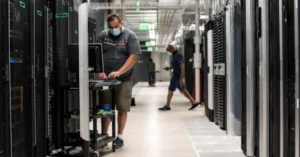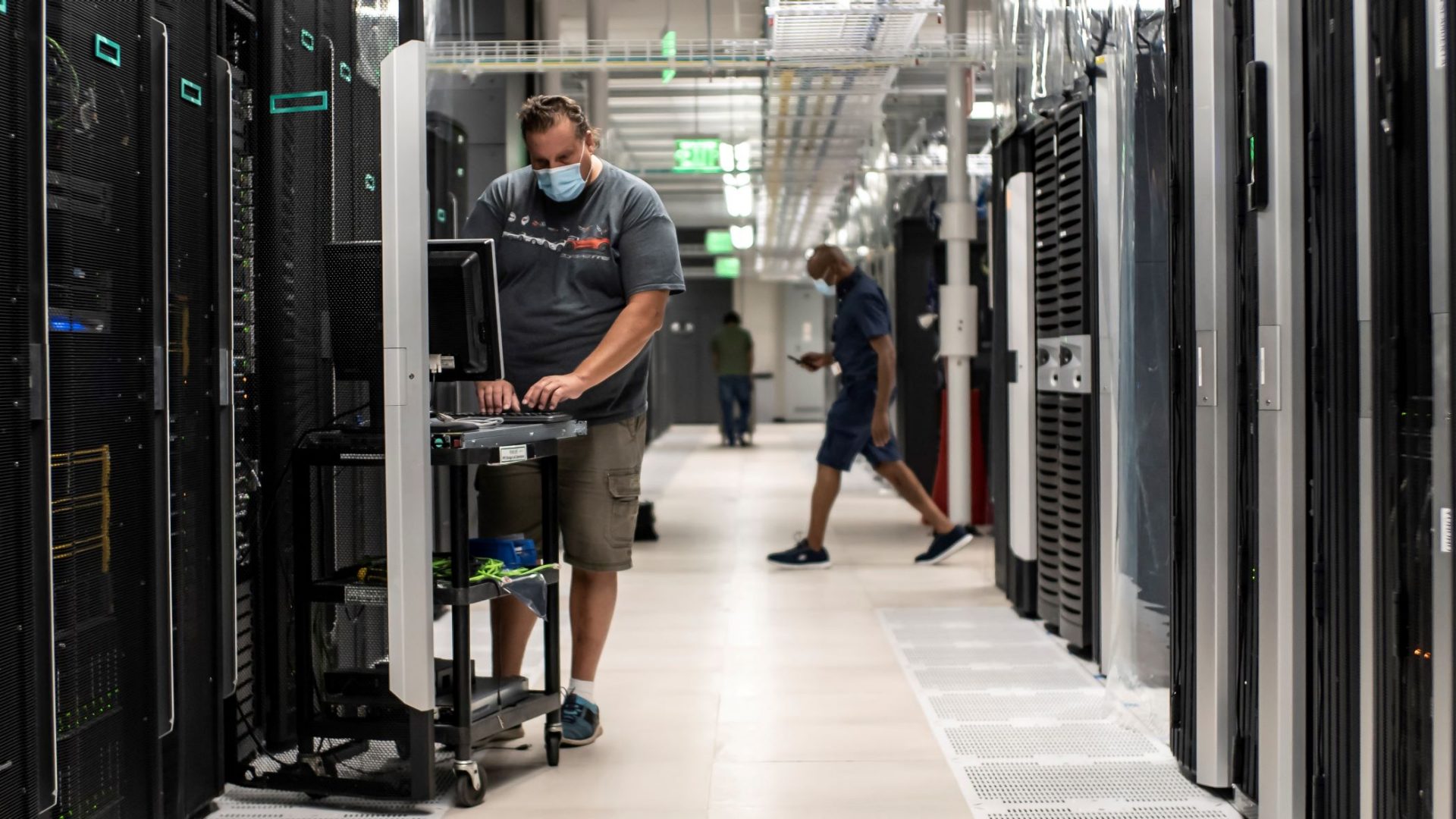A data center is a physical location where businesses keep their mission-critical programs and data at its most basic level. The design of a data center is built on a network of computer and storage resources that allow shared applications and data to be delivered. Routers, switches, firewalls, storage systems, servers, and application-delivery controllers are all important components of a data center design.
What defines a modern data center?
Nowadays, data centers are vastly different from those they were only a few years ago. Virtual networks that support applications and workloads across pools of physical infrastructure and into a multi-cloud environment have replaced traditional on-premises physical servers.
Data exists and is networked across numerous data centers, the edge, and public and private clouds in today’s world. The data center must be able to communicate with all of these different locations, on-premises and in the cloud. The public cloud, too, is made up of data centers. When applications are hosted in the cloud, the cloud provider’s data center resources are used.
What is the significance of data centers in the business world?
Data centers, in the field of enterprise IT, are meant to support business applications and operations such as:
- Email communication and file sharing
- Applications for Productivity
- Management of customer relationships (CRM)
- Databases and enterprise resource planning (ERP)
- Machine learning, artificial intelligence, and big data
- Communications and collaboration services, as well as virtual desktops
What makes up a data center’s key components?
Routers, switches, firewalls, storage systems, servers, and application delivery controllers are all part of the design of a data center. Because these parts store and manage important business data and applications, data center security is very important when designing a data center. Together, they offer:
Networks and infrastructure
This connects servers (physical and virtualized), data center services, storage, and external connectivity to end-users in places like homes and businesses.
Infrastructure for storage.
Data is the fuel of the modern data center, and it comes from all over the world. Storage systems are used to keep this valuable thing safe.
Computing power
As the heart of a data center, applications are what move it. Applications run on these servers because they have a lot of processing power, memory, local storage, and network connectivity.
How do data centers operate?
Data center services are usually used to protect the performance and integrity of the most important parts of the data center.
A device that protects your network
These include a firewall and intrusion protection to keep the data center safe.
Assurance of the application’s delivery
These mechanisms help keep applications running smoothly by automatically switching servers and distributing the load.
What can you find at a data center?
To support the center’s hardware and software, data center components necessitate a substantial infrastructure. Power subsystems, uninterruptible power supplies (UPS), ventilation, cooling systems, fire suppression, backup generators, and connections to external networks are among these components.
What are the data center infrastructure standards?
ANSI/TIA-942 is the most frequently used standard for data center design and infrastructure. It incorporates ANSI/TIA-942-ready certification requirements, which ensure compliance with one of four data center tiers based on redundancy and fault tolerance levels.
- Tier 1: The foundation of the site’s infrastructure. Physical events are only partially protected in a Tier 1 data center. It has a single, non-redundant distribution channel and single-capacity components.
- Tier 2: Component site infrastructure with high redundancy. This data center provides better protection against natural disasters. It has components with redundant capacity and a single, non-redundant distribution path.
- Tier 3: Site infrastructure that can be maintained at the same time. This data center provides redundant-capacity components and numerous independent distribution methods to protect against practically all physical events. Each component can be updated or uninstalled without affecting end-user services.
- Tier 4: Site infrastructure that is fault-tolerant. This data center offers the highest levels of redundancy and fault tolerance. Concurrent maintenance and one issue anywhere in the installation without generating downtime is possible thanks to redundant-capacity components and several independent distribution pathways.
Types of data centers
There are many different types of data centers and service models to choose from. Their classification is determined by whether they are owned by a single business or a group of companies, how they fit (if at all) into the topology of other data centers, the computing and storage technology they employ, and even their energy efficiency. Data centers are divided into four categories:
Enterprise data centers
Companies build, own, and run these, which are optimized for their end consumers. The majority of the time, they are located on the company campus.
Managed services data centers
These data centers are managed on behalf of a business by a third party (or managed services provider). Rather than purchasing equipment and infrastructure, the corporation leases it.
Colocation data centers
In colocation (“colo”) data centers, a business rents space within a data center that is not owned by the business. The colocation data center provides the infrastructure, such as the building, cooling, bandwidth, and security, while the company supplies and manages the components, such as servers, storage, and firewalls.
Cloud data centers
In an off-premises data center configuration, data and applications are hosted by a cloud service provider such as Amazon Web Services (AWS), Microsoft Azure, IBM Cloud, or another public cloud provider.
The progression of infrastructure: from mainframes to cloud apps
Over the previous 65 years, computing infrastructure has evolved in three major waves:
- The first wave witnessed the transition away from proprietary mainframes and toward on-premises x86-based servers operated by internal IT teams.
- A second wave witnessed extensive virtualization of application-supporting infrastructure. This resulted in more efficient resource use and task mobility across pools of physical infrastructure.
- The third wave occurs in the present, with the adoption of cloud, hybrid cloud, and cloud-native technologies. The latter refers to cloud-native applications.
A distributed network of applications
This evolution resulted in the development of distributed computing. This is the environment in which data and applications are scattered across various systems, networked and integrated by network services and interoperability standards to operate as a unified environment.
As a result, the term “data center” is now used to refer to the department responsible for these systems regardless of their physical location.
Businesses can opt to develop and manage their own hybrid cloud data centers, lease space in colocation facilities (colos), consume shared computing and storage services, or use public cloud-based services. As a result, apps no longer exist in a single location.
They work in a variety of public and private clouds, as well as managed services and on-premises environments. The data center has grown in size and complexity in this multi-cloud era, delivering the ultimate user experience.




Leave a Reply
You must be logged in to post a comment.